Introduction
The integration of generative AI chatbots for higher education has revolutionized administrative processes, offering unprecedented efficiency and responsiveness.
Recent statistics underscore the growing importance of this technology: according to a 2023 Educause report, 45% of higher education institutions now use or plan to implement generative AI chatbots for education within the next two years.
This surge in adoption reflects the transformative potential of these tools in streamlining operations and enhancing student experiences.
The market for generative AI chatbots for education is expanding rapidly, with projections indicating a compound annual growth rate of 28.4% from 2023 to 2028 (MarketsandMarkets, 2023).
This growth is driven by the increasing demand for 24/7 student support and the need to optimize administrative resources. While some institutions opt for free chatbot for education solutions, many are investing in sophisticated, custom-built systems to meet their specific needs.
The best chatbots for education are those that seamlessly integrate with existing systems, offer multilingual support, and provide personalized responses.
A 2024 survey by Inside Higher Ed found that institutions using chatbot for education system solutions reported a 30% reduction in administrative workload and a 25% increase in student satisfaction rates.
As the technology continues to evolve, generative AI chatbots are poised to become an indispensable tool in higher education administration, offering innovative solutions to longstanding challenges.
So continue reading to know more about generative AI for higher education administration.
Current Challenges in Higher Education Administration
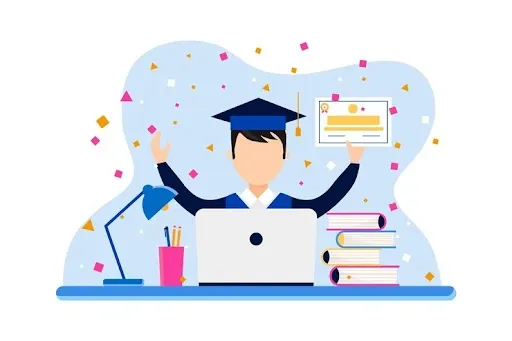
Administration in higher education is a complex and demanding field. Universities and colleges deal with numerous administrative tasks daily.
These tasks are essential but often cumbersome. They can consume a lot of time and resources
Overview of Administrative Tasks in Higher Education
Administrative tasks in higher education are numerous and varied. They include:
- Admissions and Enrollment: Processing applications, verifying documents, and managing enrollment procedures. These tasks require meticulous attention to detail.
Ensuring every applicant's documents are complete and accurate can take weeks.
- Scheduling and Timetabling: Creating schedules for classes, exams, and events. This involves coordinating with faculty and students to avoid conflicts.
Accommodating the availability of dozens of professors while ensuring students can attend required courses is a challenge.
- Student Support Services: Providing academic and personal support to students. This includes counseling, career guidance, and academic advising.
Counselors often juggle multiple students with diverse needs, which can be overwhelming without adequate resources.
- Grading and Assessment: Recording grades, managing exam schedules, and ensuring fair assessments. Professors and administrative staff must ensure that grading is consistent and timely, which can be challenging during peak exam periods.
- Data Management: Handling student records, financial information, and compliance reports. This involves maintaining accurate and secure databases.
One data entry error can lead to significant issues, such as incorrect student records.
Common Issues Faced by Administrators
Administrators in higher education face several common issues:
- High Workload: The sheer volume of tasks can be overwhelming. Staff often have to work long hours to meet deadlines. During the admissions season, the workload can triple, leading to burnout.
- Inefficiency: Manual processes are often slow and prone to errors. This can lead to delays and mistakes. An error in scheduling can result in class cancellations or double-booked rooms, disrupting the entire academic schedule.
- Limited Resources: Many institutions operate with limited budgets. This means fewer staff members to handle the workload, leading to increased pressure on existing employees.
When there's only one counselor for hundreds of students, providing adequate support becomes nearly impossible.
- Communication Issues: Coordinating between departments can be challenging. Miscommunications can cause significant problems.
If the admissions department doesn't communicate changes to the enrollment process to the IT department, it can lead to system errors and frustrated applicants.
- Compliance and Regulations: Ensuring compliance with various regulations requires constant attention. Failing to comply can result in penalties and loss of accreditation.
Keeping up with changing laws and policies is a full-time job in itself.
Impact of These Challenges on Educators and Students

The challenges faced by administrators significantly impact educators and students:
- Reduced Efficiency: When administrative tasks are slow and inefficient, it affects the entire institution. Students may face delays in receiving grades or accessing support services.
A delay in grading can affect a student's application for internships or further studies.
- Increased Stress: Both staff and students can experience high levels of stress. Overworked staff may not be able to provide the best support to students.
A counselor dealing with burnout is less effective in helping students cope with their own stress.
- Lower Quality of Education: Administrative inefficiencies can lead to a lower quality of education. If scheduling conflicts result in canceled classes, students miss out on valuable learning opportunities. This can affect their academic performance and overall experience.
- Poor Student Experience: Students expect smooth and efficient administrative processes. Delays or mistakes can lead to frustration and dissatisfaction. Incorrect billing information can lead to financial stress for students and their families.
- Hindered Innovation: Administrators bogged down with routine tasks have less time to focus on innovation and improvement.
Implementing new programs or technologies becomes difficult when staff are stretched thin just managing daily operations.
Benefits of Generative AI in Higher Education Administration
The integration of Generative AI in higher education administration offers numerous advantages.
It addresses many of the existing challenges faced by administrators, making processes more efficient and effective.
Automation of Repetitive Tasks
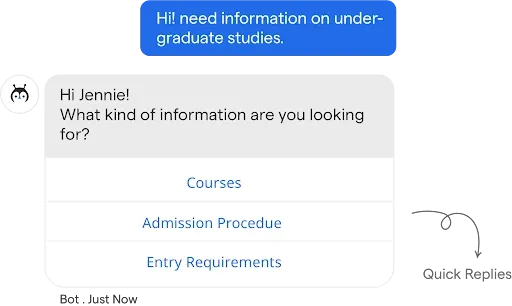
Generative AI excels at automating repetitive and time-consuming tasks, freeing up staff to focus on more complex duties.
- Admissions Processing: Handling thousands of applications manually can be overwhelming. Generative AI can automate data entry, document verification, and application tracking.
This reduces errors and speeds up the admissions process. An admissions officer can then spend more time on evaluating the quality of applicants rather than being bogged down by paperwork.
- Scheduling and Timetabling: Creating schedules that accommodate both faculty and student availability is complex. Generative AI can generate optimized schedules, reducing conflicts and making adjustments in real-time.
This ensures that classrooms are used efficiently and that students can attend required courses without scheduling issues.
- Grading and Assessment: Grading assignments and exams is repetitive and can be prone to human error. Generative AI can automate grading for objective assessments, providing quick and accurate results.
This allows professors to focus more on providing qualitative feedback and engaging with students.
Improved Efficiency and Accuracy
Implementing Generative AI in administrative processes enhances overall efficiency and accuracy.
- Data Management: Maintaining accurate student records is crucial. Generative AI can automatically update and manage these records, ensuring data is always current and error-free.
This minimizes the risk of discrepancies in student information, which can affect everything from class enrollment to graduation eligibility.
- Communication: Ensuring effective communication between departments is essential. AI chatbots for education can handle routine inquiries from students and faculty, providing instant responses.
This reduces the workload on administrative staff and ensures that all parties have the information they need promptly.
- Financial Aid Processing: Managing financial aid applications involves checking eligibility, verifying documents, and processing funds.
Generative AI can streamline this process by automatically verifying information and calculating aid amounts. This ensures that students receive their financial aid promptly and accurately.
Enhanced Decision-Making
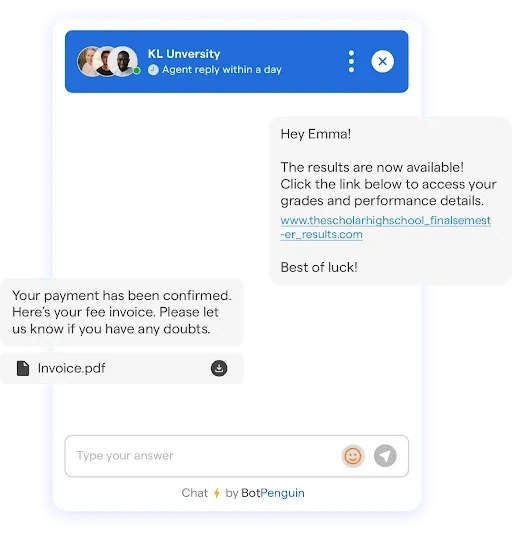
Generative AI provides valuable insights that can improve decision-making in higher education administration.
- Predictive Analytics: Generative AI can analyze historical data to predict future trends. For example, predicting enrollment numbers for the next semester can help in resource planning.
Administrators can make informed decisions about hiring faculty, allocating classroom space, and purchasing materials.
- Student Performance Monitoring: Monitoring student performance helps identify those who may need additional support. Generative AI can track academic progress and flag students who are at risk of falling behind.
This enables early intervention and tailored support to help students succeed.
- Resource Allocation: Deciding how to allocate resources effectively can be challenging. Generative AI can analyze various factors such as class sizes, faculty workloads, and budget constraints to suggest optimal resource distribution. This ensures that resources are used efficiently to benefit the most students.
Suggested Reading:
Simplify Student Enrollment Procedures with Generative AI Tools
Cost Savings
Integrating Generative AI can lead to significant cost savings for higher education institutions.
- Reduced Labor Costs: Automating routine tasks reduces the need for manual labor. This can lower administrative costs and allow institutions to allocate funds to other critical areas.
For instance, instead of hiring additional staff for data entry, the budget can be used to improve student services or invest in educational technologies.
- Efficient Resource Use: By optimizing processes such as scheduling and resource allocation, Generative AI ensures that resources are used more efficiently.
This reduces waste and maximizes the use of existing assets. Efficient scheduling means that classrooms are utilized fully, and teaching resources are deployed where they are most needed.
- Minimized Errors: Errors in administrative processes can be costly. Generative AI reduces the likelihood of mistakes, leading to cost savings in correcting errors and mitigating their impact.
Accurate financial aid processing, for example, reduces the risk of overpayments or underpayments, ensuring that funds are distributed correctly.
Key Applications of Generative AI in Administration
Generative AI is transforming higher education by streamlining various administrative tasks.
These applications not only improve efficiency but also enhance the overall experience for students and staff.
Admissions and Enrollment Processes
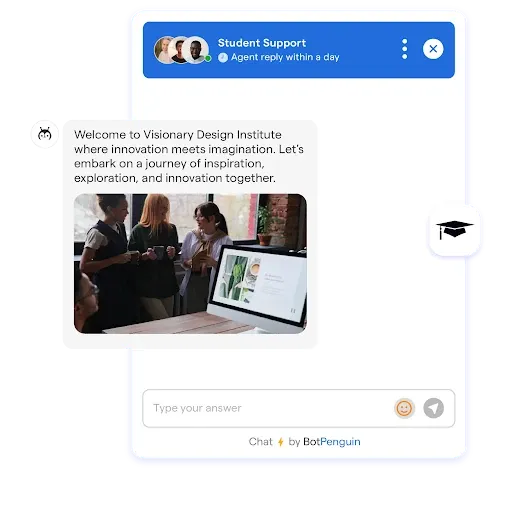
Admissions and enrollment are critical functions in higher education administration. Generative AI can simplify these processes in several ways:
- Application Processing: Generative AI can automate the review of applications, checking for completeness and accuracy.
This speeds up the process and reduces the risk of errors. Admissions staff can then focus on evaluating the merits of applications rather than administrative details.
- Document Verification: Verifying the authenticity of submitted documents can be time-consuming. AI chatbots for education can quickly cross-check documents against databases, ensuring they are genuine.
This reduces the workload on staff and speeds up the verification process.
- Communication with Applicants: Generative AI can send automated updates to applicants about the status of their applications.
This keeps students informed and reduces the number of inquiries that staff need to handle. The use of the best chatbots for education ensures that applicants receive timely and accurate information.
Scheduling and Timetable Management
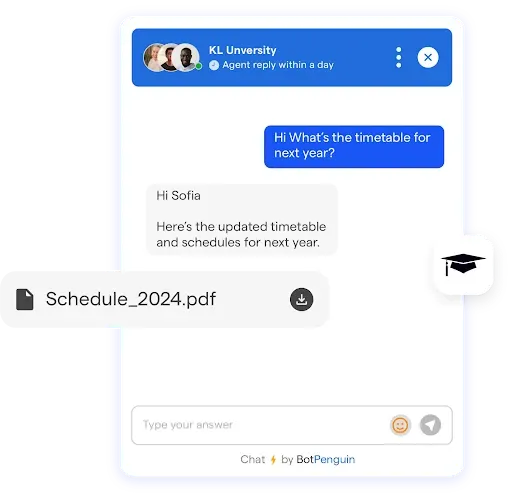
Creating and managing schedules is a complex task that involves coordinating numerous variables. Generative AI can optimize this process:
- Class Scheduling: Generative AI can analyze the availability of faculty, classrooms, and students to create efficient schedules.
This minimizes conflicts and ensures optimal use of resources. Automated scheduling tools can adjust in real-time to accommodate changes, such as a professor's sudden unavailability.
- Exam Timetabling: Scheduling exams can be particularly challenging due to the need to avoid conflicts and manage resources efficiently.
Generative AI can generate timetables that ensure students do not have overlapping exams and that all resources are utilized effectively.
Student Support Services
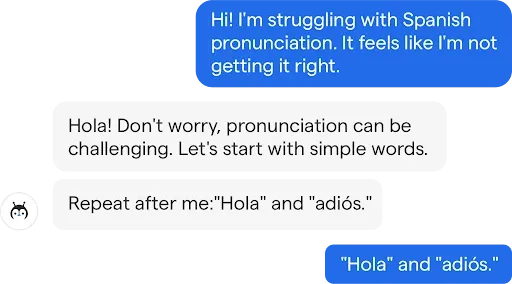
Providing comprehensive support to students is essential for their success. Generative AI can enhance student support services:
- Counseling and Advising: AI chatbots for education can provide initial counseling and advising services, handling routine queries and directing students to the appropriate resources. This ensures that students get timely support while freeing up counselors for more complex issues.
- Career Services: Generative AI can help students with career planning by providing information on job opportunities, resume building, and interview preparation.
It can analyze student profiles and suggest suitable career paths based on their skills and interests.
- Mental Health Support: AI chatbots for higher education can offer initial mental health support by providing information on coping strategies and directing students to professional help if needed. This ensures that students receive immediate support, even outside of office hours.
Grading and Assessment Automation
Grading and assessment are integral parts of the educational process. Generative AI and AI chatbot for higher education can streamline these tasks:
- Automated Grading: Generative AI can grade objective assessments such as multiple-choice tests quickly and accurately.
This reduces the grading burden on professors and ensures consistent and unbiased results.
- Plagiarism Detection: AI chatbots for education can check assignments and papers for plagiarism, ensuring academic integrity.
This saves time for faculty and maintains the credibility of academic programs.
- Feedback Generation: Providing detailed feedback is crucial for student improvement. Generative AI can generate initial feedback on assignments, pointing out areas of improvement and strengths. This helps students understand their performance better and learn more effectively.
Data Management and Analysis
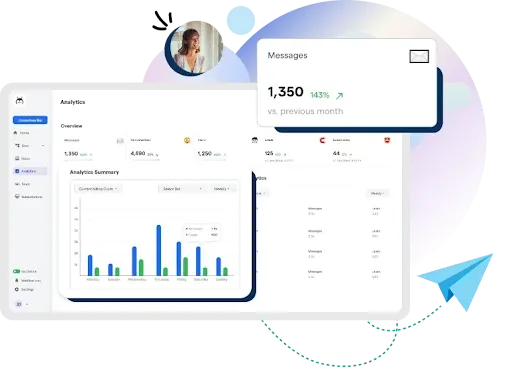
Managing and analyzing data is critical for making informed decisions in higher education. Generative AI can enhance these processes:
- Student Records Management: Generative AI can maintain and update student records accurately and efficiently. This ensures that all information is current and easily accessible, reducing administrative workload.
- Data Analysis: Generative AI can analyze vast amounts of data to provide insights into student performance, enrollment trends, and resource utilization.
This helps administrators make data-driven decisions that improve institutional effectiveness.
- Compliance Reporting: Ensuring compliance with various regulations requires meticulous data management. Generative AI can automate the generation of compliance reports, ensuring accuracy and reducing the burden on staff.
Personalized Learning Experiences
Personalizing learning experiences can significantly enhance student engagement and success. Generative AI can facilitate personalized learning:
- Adaptive Learning Paths: Generative AI can create personalized learning paths based on individual student needs and progress.
This ensures that each student receives the support they need to succeed.
- Resource Recommendations: Generative AI can recommend resources such as textbooks, articles, and online courses tailored to a student’s learning style and interests.
This enhances the learning experience and helps students achieve better outcomes.
- Performance Monitoring: Generative AI can monitor student performance in real-time and provide personalized feedback and support.
This helps students stay on track and address any issues promptly.
Implementing Generative AI in Higher Education
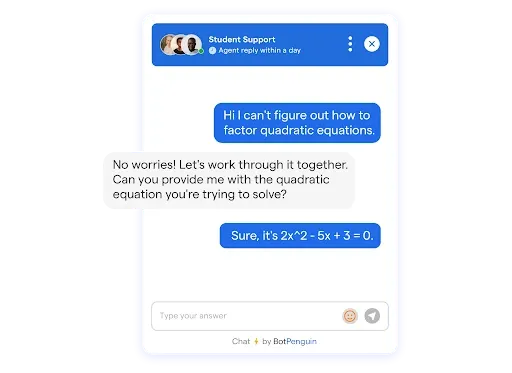
Integrating Generative AI into higher education administration can revolutionize processes and improve efficiency.
To successfully implement this technology, institutions need to follow a structured approach.
Steps to Integrate AI in Administrative Processes
Implementing Generative AI involves several key steps:
- Assessment and Planning: Begin by identifying the administrative processes that would benefit most from automation. Evaluate current workflows to determine pain points and inefficiencies.
Involve key stakeholders, such as administrators, faculty, and IT staff, to get a comprehensive view of needs and expectations.
- Setting Objectives: Define clear goals for the AI integration. Objectives might include reducing processing times, improving accuracy, or enhancing student support.
Clear objectives help in measuring the success of the implementation.
- Choosing the Right Technology: Select the appropriate Generative AI tools and platforms that align with your goals. Look for solutions that offer customization to fit the specific needs of your institution.
- Pilot Testing: Start with a pilot project to test the chosen AI solutions in a controlled environment. Monitor the performance and gather feedback from users.
This step helps in identifying potential issues and areas for improvement before a full-scale rollout.
- Full Implementation: Based on the insights from the pilot test, proceed with the full implementation. Ensure that all necessary resources, including hardware and software, are in place.
Maintain clear communication with all stakeholders throughout the process.
- Monitoring and Evaluation: Continuously monitor the performance of the AI systems. Evaluate the impact on administrative efficiency and effectiveness.
Use this data to make further adjustments and improvements.
Tools and Technologies Available
Several tools and technologies can aid in integrating Generative AI into higher education administration:
- AI Chatbots for Higher Education: Generative AI chatbots, like BotPenguin, can handle a variety of tasks, from answering student queries to providing support services.
They can operate 24/7, ensuring students receive help whenever they need it.
- Automated Document Processing Tools: These tools can automate the verification and processing of application documents, significantly reducing manual effort and the risk of errors.
- Scheduling Software: AI-powered scheduling tools can create optimal class and exam timetables, adjusting in real-time to accommodate changes.
- Data Analytics Platforms: These platforms can analyze vast amounts of data to provide insights into student performance, enrollment trends, and resource utilization.
They support informed decision-making and strategic planning.
- Free Chatbot for Education Systems: Some providers offer basic chatbot services at no cost, which can be particularly beneficial for institutions with limited budgets.
These chatbots can handle common inquiries and administrative tasks, freeing up staff time for more complex issues.
Suggested Reading:
How Do Chatbots for Education Help in Enhancing Learning?
Best Practices for Implementation
To ensure a successful implementation of Generative AI, consider the following best practices:
- Stakeholder Involvement: Involve all relevant stakeholders from the beginning. This includes administrators, faculty, students, and IT staff. Their input is crucial for identifying needs and ensuring the chosen solutions meet those needs.
- Clear Communication: Maintain open lines of communication throughout the implementation process. Regular updates and feedback sessions can help address concerns and keep everyone informed about progress.
- Phased Approach: Implement the AI solutions in phases rather than all at once. This allows for gradual adjustment and minimizes disruption.
Start with the most critical areas and expand gradually.
- User Training: Provide comprehensive training for all users. This ensures they understand how to use the new tools effectively and can take full advantage of their capabilities.
- Continuous Improvement: AI systems should be continually monitored and refined based on feedback and performance data. Regularly update the systems to incorporate new features and improvements.
Training and Support for Staff
Effective training and support are essential for the successful integration of Generative AI:
- Training Programs: Develop detailed training programs that cover all aspects of the new AI tools. These programs should be tailored to different user groups, such as administrators, faculty, and IT staff.
- Ongoing Support: Provide continuous support to help staff adapt to the new systems. This can include help desks, online resources, and regular refresher training sessions.
- Feedback Mechanisms: Establish channels for users to provide feedback on the AI systems. This feedback is valuable for making improvements and addressing any issues that arise.
- Encouraging Adoption: Promote the benefits of the new AI systems to encourage adoption. Highlight how these tools can reduce workload, improve efficiency, and enhance the overall administrative process.
Conclusion
Implementing Generative AI and chatbots in higher education administration can revolutionize processes, improve efficiency, and enhance the overall experience for students and staff.
From automating repetitive tasks to offering personalized learning experiences, the benefits of AI chatbots in education are significant and tangible. As institutions look to the future, embracing AI technology is not just a trend but a necessity to stay competitive and effective.
One way to achieve this transformation is by integrating advanced AI chatbots. BotPenguin offers some of the best chatbots for education that are easy to set up and can seamlessly handle a variety of administrative tasks.
Imagine reducing the workload on your staff, providing 24/7 student support, and making data-driven decisions effortlessly. Don’t miss on chatbots for education system; streamline your administration with BotPenguin’s intuitive and powerful chatbot solutions.
Elevate your institution’s efficiency and enhance the educational experience for everyone involved.
Suggested Reading:
BotPenguin's Free Chatbot for Education: The Ideal Choice
Frequently Asked Questions (FAQs)
What is Generative AI is chatbots in higher education?
Generative AI is chatbots in higher education uses advanced algorithms to automate and enhance administrative tasks, improving efficiency, accuracy, and decision-making processes within educational institutions.
How can Generative AI streamline administrative processes?
Generative AI can automate repetitive tasks, optimize scheduling, manage data, and provide real-time support through AI chatbots, significantly reducing administrative workload and increasing operational efficiency.
What are the benefits of using AI chatbots in education?
AI chatbots in education offer 24/7 support, answer queries, assist with admissions, and manage scheduling, providing timely assistance to students and staff while freeing up administrative resources.
Can Generative AI help with student enrollment?
Yes, Generative AI can automate application processing, verify documents, and communicate with applicants, streamlining the enrollment process and reducing administrative burdens.
What tools are available for implementing Generative AI in higher education?
Tools include AI chatbots for education, automated scheduling software, data analytics platforms, and document processing tools, all designed to enhance administrative efficiency and accuracy.
How can institutions ensure successful generative AI integration?
Successful AI integration requires careful planning, stakeholder involvement, clear objectives, phased implementation, comprehensive training, and continuous monitoring and improvement of AI systems.
